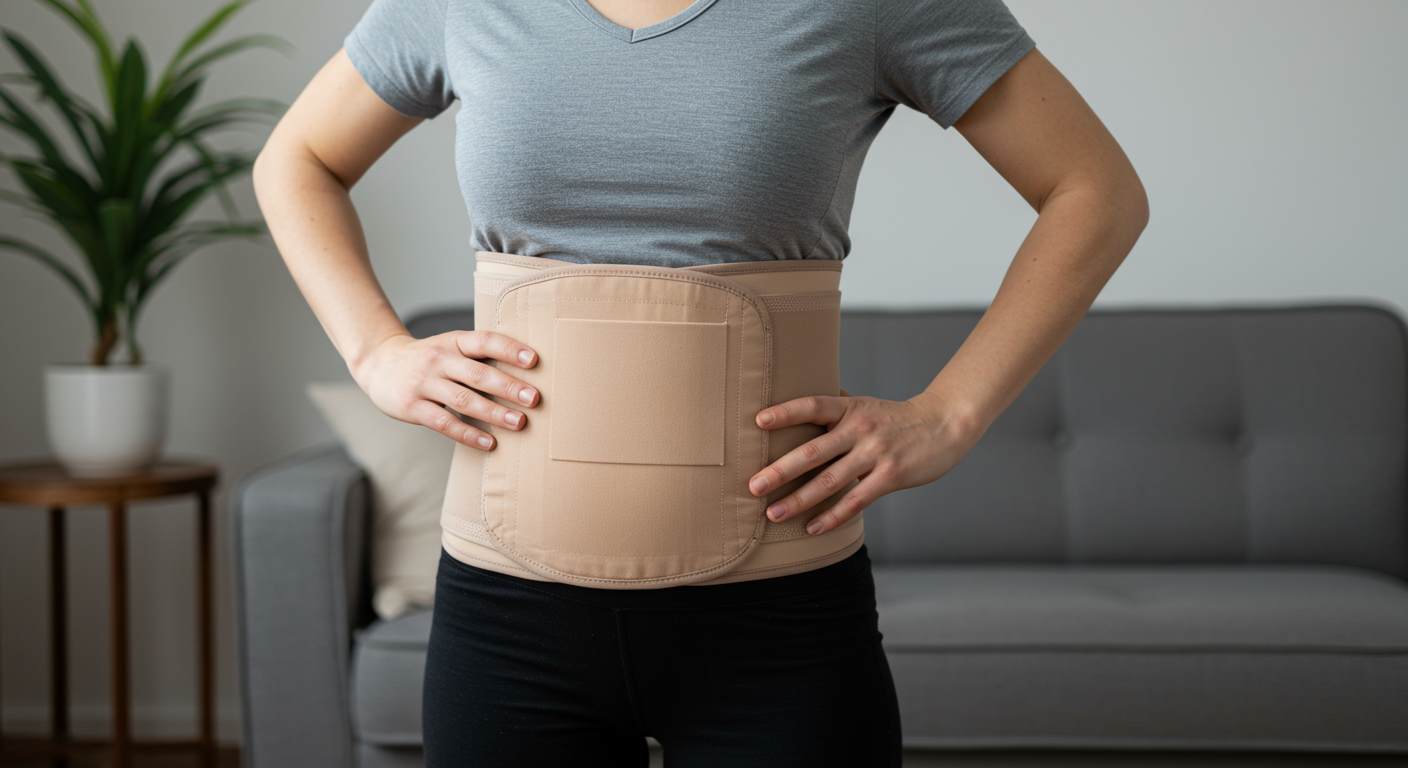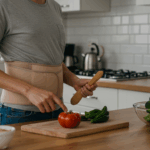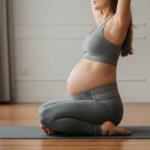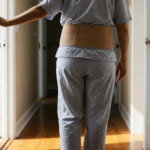Finding Your Perfect Fit: A Complete Sizing Guide
Selecting the correct size abdominal binder is crucial for both comfort and effectiveness. An improperly sized binder can cause discomfort, restrict breathing, or fail to provide adequate support during your recovery journey.
Why Size Matters
A properly fitted abdominal binder should provide firm compression without restricting your breathing or circulation. Too loose, and it won’t offer the support you need. Too tight, and it can impede healing and cause additional complications.
Measuring for Your Abdominal Binder
What You’ll Need:
- Flexible measuring tape
- A mirror or assistance from someone
- Pen and paper to record measurements
Step-by-Step Measuring Process:
- Stand naturally – Don’t pull in your stomach or push it out
- Locate your measurement point – This is typically at the widest part of your abdomen, usually at or just below the navel
- Wrap the tape – Keep it parallel to the floor and snug but not tight
- Take multiple measurements – Measure 2-3 times to ensure accuracy
- Consider surgical dressings – If measuring post-surgery, account for any bandages or dressings

Understanding Size Charts
Most manufacturers use circumference measurements:
- Small: 24-34 inches
- Medium: 34-44 inches
- Large: 44-54 inches
- X-Large: 54-64 inches
- XX-Large: 64-74 inches
Important Note: Always check the specific manufacturer’s size chart, as sizing can vary between brands.
Special Considerations
Post-Surgical Swelling
After surgery, expect some swelling. Consider ordering a size that allows for adjustment or purchasing an adjustable model.
Body Shape Changes
Your body shape may change during recovery. Look for binders with:
- Multiple closure points
- Adjustable panels
- Elastic side panels for flexibility
Height Considerations
Binder height typically ranges from 9 to 12 inches. Taller individuals may need wider binders to cover the entire abdominal area effectively.

Red Flags: When to Resize
- Difficulty breathing or feeling lightheaded
- Numbness or tingling in the torso or legs
- Skin irritation or pressure marks
- The binder rolls up or shifts frequently
- Gaps between the binder and your body
Tips for First-Time Users
- Start gradually – Wear for short periods initially
- Layer appropriately – Wear over a thin cotton shirt to prevent skin irritation
- Check fit regularly – Your size needs may change as swelling reduces
- Listen to your body – Discomfort is a sign to readjust
When to Consult Your Healthcare Provider
Always consult your doctor or surgeon about:
- Recommended wearing schedule
- Appropriate compression level
- Any concerns about fit or comfort
- Changes in your condition while wearing the binder
Remember, the right size abdominal binder is an investment in your recovery. Take time to measure correctly and don’t hesitate to exchange for a different size if needed.
Related Articles You May Find Helpful
Continue Your Recovery Journey:
- 📖 Daily Activities with an Abdominal Binder
Learn how to manage everyday tasks while wearing your support - 🔬 Abdominal Binder Materials: What Works Best
Discover which materials offer the best comfort and support - 🧼 Caring for Your Support Products
Maintain your binder for optimal performance and hygiene




